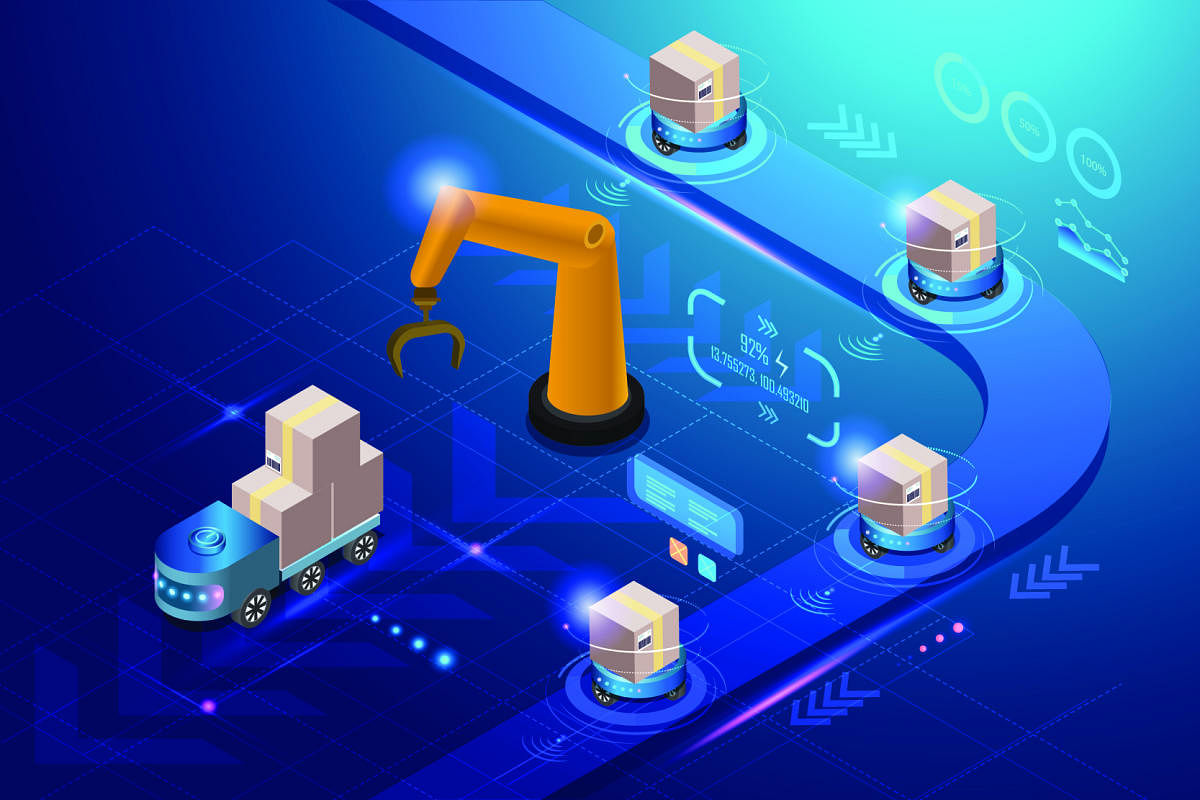
The logistics industry represents 12% of global GDP and is growing at a compounded annual growth rate (CAGR) of 5% per year. Based on these estimates, global logistics spending will surge to more than $15 trillion by 2023. These estimates in conjunction with surging supply chain costs, created by the dynamics of the global pandemic, have increased the need for innovative technology to increase efficiency and lower supply chain costs.
But what is a supply chain? In its simplest form, a supply chain is a sequence of processes involved in the production and distribution of goods. Although this sounds simple, trillions are spent in logistics that can be reduced through the automation of manual processes and leveraging machines to identify problems before they occur by leveraging millions of data points.
Fortunately, artificial intelligence (AI) has proven itself to be an innovation with the potential to transform supply chains by eliminating inefficiencies and creating insights that enable more effective planning and decision-making. The question is, how to effectively apply AI to supply chain processes to yield transformative results.
Many supply chain processes require multiple documents to secure the flow of goods, funds and information involved in the transactions that comprise a supply chain. These include contracts, invoices, bills of landing, packing slips and customs declarations to name a few. The opportunity for human error, missing documents, or other issues could cost thousands in fees, not to mention poor customer experience. Hence, digitising these documents and exchanging the data electronically is a key step in eliminating significant waste in the supply chain. AI has proven effective in digitising paper documents helping to enable paperless transactions.
Combined with Machine Learning (ML) and Blockchain, the benefits of AI have become even more impactful. For instance, robotics is currently being successfully applied in many supply chain applications to automate repetitive tasks; thus, reducing staffing costs and increasing efficiency. However, robotic process automation is just the tip of the iceberg. Cognitive automation introduces new opportunities like Robotic Process Automation (RPA). RPA leverages AI technologies such as Optical Character Recognition, Text Analytics and ML to improve customer and workforce experience. A specific example is the deployment of chatbot technology to respond to basic customer inquiries. Chatbots have reduced the cost of call centres and increased customer response times.
Innovative technologies offered by supply chain technology firms can make a significant impact on supply chain sustainability as well. Utilising technology to quantify CO2 emissions and leverage data as a key criterion for carrier selection can also make an immediate impact. AI can be used to strengthen end-to-end logistics execution by connecting key activities such as planning, booking, settlement and shipment tracking across a vast network of trading partners. Predictive analytics, end-to-end visibility and last mile are just a few of the key areas that can be improved with the use of AI.
Finally, as AI is further deployed to increase efficiency and eliminate waste in the supply chain, companies should take care to balance these decisions with the impact they will have on customer experience and satisfaction. They have to ensure that there are no unexpected negative effects of AI on the human experience since the same cannot be ignored.
(The writer is the chief executive officer of Blume Global - a supply chain solutions firm)